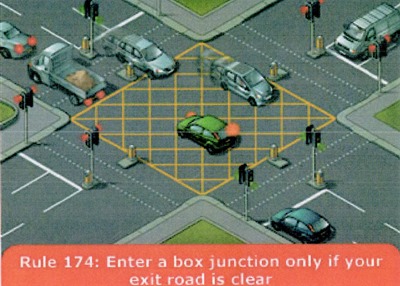
Advocates Rajesh Sachdeva and Shobha Gupta had filed public interest litigation (PIL) on 5 January, before the Delhi high court to introduce box junctions - a traffic control mechanism used at road intersections in busy cities. Vehicles are prohibited from entering a box chalked out on the road if the route immediately ahead of the box is congested. Vehicles are not allowed to stop inside the box. This prevents gridlocks and traffic jams.
The petition was filed with an application for urgent hearing, on the ground that “traffic in [Delhi] has become a cause of concern and menace. It is hampering the standard of living of the people of Delhi and interfering with their right to live with dignity and the right to trade and profession.”
A bench of chief justice J Rohini and justice Jayant Nath took up the PIL for hearing on 12 January.
Additional solicitor general Sanjoy Ghose, briefed by advocate Vikramditya, appeared for the Delhi government and told the court that 11 functional district road safety committees – one for each revenue district – existed in Delhi since June 2014, when they were created by the Delhi government under the Motor Vehicles Act 1988.
The road safety committees look into all matters related to Delhi’s road safety, seven of which are listed in the June 2014 notification – including identification of “black spots” on Delhi’s roads and their remedial measures, and enforcing traffic regulations. The notification also states that the committees will convene a meeting every three months.
The bench disposed of the PIL in a single hearing, ordering:
“We therefore consider it appropriate to direct the Road Safety Committees to look into various suggestions made in the present petition and to consider the feasibility of adopting the same to tackle the traffic congestion in NCT of Delhi. Accordingly the writ petition is disposed of […]”
“An opportunity of hearing be also given to the petitioners so as to enable them to explain the efficacy of the ‘Box Junctions’ to tackle the traffic congestion and grid locking.”
Sachdeva commented: “Unfortunately in our country we lack opportunities [to approach the forum directly focussing on a public issue]. When you file a petition you learn that [road safety] committees have been formed.” He said he was not aware if the road safety committee’s formation had ever been publicised.
“Look at how successful the concept [of box junctions] is in other cities in the world. No one I spoke to knew here what the box junction is all about,” he added.
The PIL states that a box junction is “a series of marked diagonal lines making a box shape which signify to the commuter that he may only enter this box if there is a clear way ahead for him to leave clear the box junction behind his vehicle i.e. no other vehicle is stationary ahead of the box markings so as to necessitate the stopping of said vehicle within the box”. The Indian Road Congress – an expert body set up by the government to look into India’s road development – had recommended the introduction of box junctions on Indian roads as far back as in September 1994, in its guidelines on “low cost traffic management techniques”, adds the petition.
Delhi had 96 lakh private registered motor vehicles in 2015, according to the petition in which Sachdeva and Gupta argue that box junctions have succeeded in regulating traffic jams in the UK, European Union and the US and many countries have made it a rule for each intersection to be treated as a box junction irrespective of a specifically marked box.